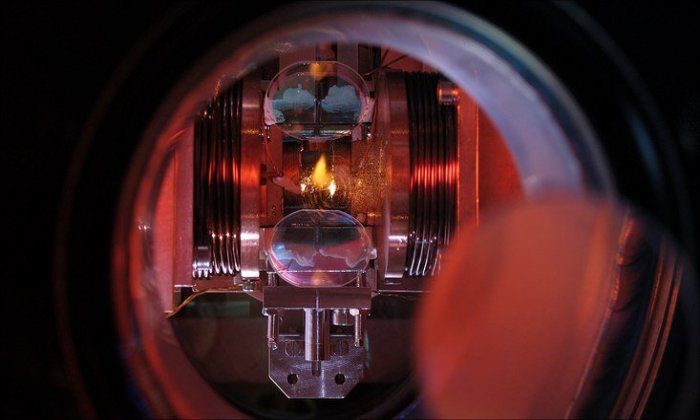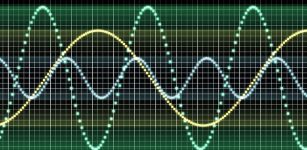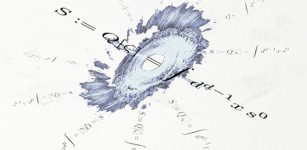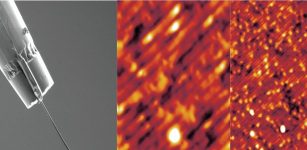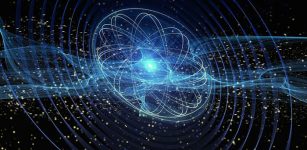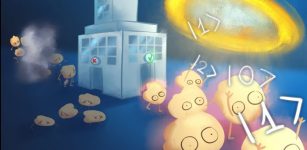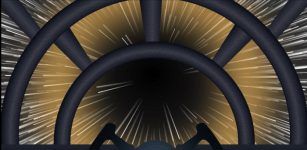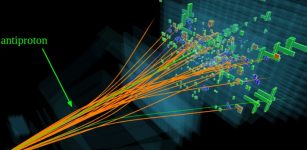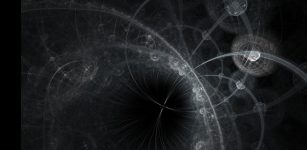Continuous Time Crystal Observed By Researchers
Eddie Gonzales Jr. – MessageToEagle.com – Researchers from the Institute of Laser Physics at Universität Hamburg have succeeded for the first time in realizing a time crystal that spontaneously breaks continuous time translation symmetry.
The image shows cold atoms (in yellow) in an optical resonator on their way to form a time crystal. Credit: University of Hamburg
They report their observation in a study published online by the journal Science.
The idea of a time crystal goes back to Nobel laureate Franck Wilczek, who first proposed the phenomenon. Similar to water spontaneously turning into ice around the freezing point, thereby breaking the translation symmetry of the system, the time translation symmetry in a dynamical many-body system spontaneously breaks when a time crystal is formed.
In recent years, researchers have already observed discrete or Floquet time crystals in periodically driven closed and open quantum systems. “In all previous experiments, however, the continuous-time translation symmetry is broken by a time-periodic drive,” says Dr. Hans Keßler from Prof. Andreas Hemmerich’s group at the Cluster of Excellence CUI: Advanced Imaging of Matter. “The challenge for us was to realize a system that spontaneously breaks the continuous time translation symmetry.”
Using a Bose-Einstein condensate inside an optical high-finesse cavity
In their experiment, the scientists used a Bose-Einstein condensate inside an optical high-finesse cavity. Using a time-independent pump, they observed a limit cycle phase which is characterized by emergent periodic oscillations of the intracavity photon number accompanied by the atomic density cycling through recurring patterns.
They found that the time phase of the oscillations takes random values between 0 and 2p, as expected for spontaneously broken continuous symmetry. By identifying the stability area in the relevant parameter space and showing the persistence of the limit cycle oscillations even in the presence of strong temporal perturbations, the researchers demonstrated the robustness of the dynamic phase.
Written by Eddie Gonzales Jr. – MessageToEagle.com Staff

